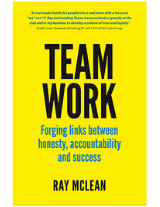In his article ‘Dee-plorable’ (afl.com.au, 3/8/11), Leigh Matthews had an interesting take on the departure of Neil Craig and Dean Bailey; in particular, his opinion on the role of leadership groups at AFL clubs, and the changing role or style of coach over the past decade.
Leigh indicated that coaches had become more consultative and were prepared to empower playing groups more than ever before.
I believe part of that shift has occurred because players have made the complete transition to full-time professional athletes. In any workforce where your employees are full time, there is a view that if you can engage them in meaningful dialogue about their workplace and have them feel a sense of ownership for the team, it can lead to better performance.
That said, it should always be remembered that the most effective leaders/coaches have been able to adjust their styles to suit the situation and the group. There are still times when it is absolutely appropriate that a coach would use a directed approach. At Leading Teams, we would refer to that as the I TELL approach.
However, we also believe there are times (when a player is trained and motivated) that some consultation is appropriate. We refer to this as WE TALK and COACH DECIDES (coach and player or coach and leadership group) or with a more mature group WE TALK and THE GROUP CAN DECIDE.
As Leigh alluded to in his article, sometimes you have leaders who have earned such a high level of trust (he referred to Tom Harley and Nick Maxwell, and I could give you a number of others in clubs I have worked with) that you may even just say YOU DECIDE. This is when it is appropriate to fully empower the athlete.
At best, under the empowerment model, you see some great examples of where a leader may act on the field and make a decision long before the runner has arrived. Naturally, this can help performance greatly. Also, strong and empowered leaders such as Harley and Brett Kirk would act quickly on issues relating to discipline and wouldn’t always have to consult with the coach first.
In his article, Leigh suggested that if the player or players haven’t earned the trust of the coach then there should be some boundaries applied. At Leading Teams, this is one of the fundamentals of our program: the coach must be honest about who he trusts and why. This enables players to continue to learn and improve.
The problem comes when a coach loses trust either in a player’s competence (form) or begins to question his character (is the player making decisions for his benefit and no longer for the team?). Leigh is right in suggesting that if this is not addressed it can only end badly.
The issue is in understanding that empowerment is never all or nothing; it should be a structured choice. Has the player earned the trust? If so, give him some more responsibility.
I worked with Paul Roos at Sydney for seven years, and he was a great advocate of empowering the appropriate players. In his own days as a player, he was somewhat frustrated at being trusted by his coaches but not consulted or given much responsibility.
In the end, it is the coach’s choice to empower his trusted players, and there will always be some risks. However, the consequences of not giving more responsibility to a trusted player means you potentially limit his impact. In that case, he just does as he is told.
I have always believed in the saying: “none of us are as smart as all of us”.
Ray founded Leading Teams in 1992 after working as a leadership officer with the Air Force. He has published two books, ‘Any Given Team’ and ‘Team Work’. Ray is based in Geelong.
Learn more about Ray.



